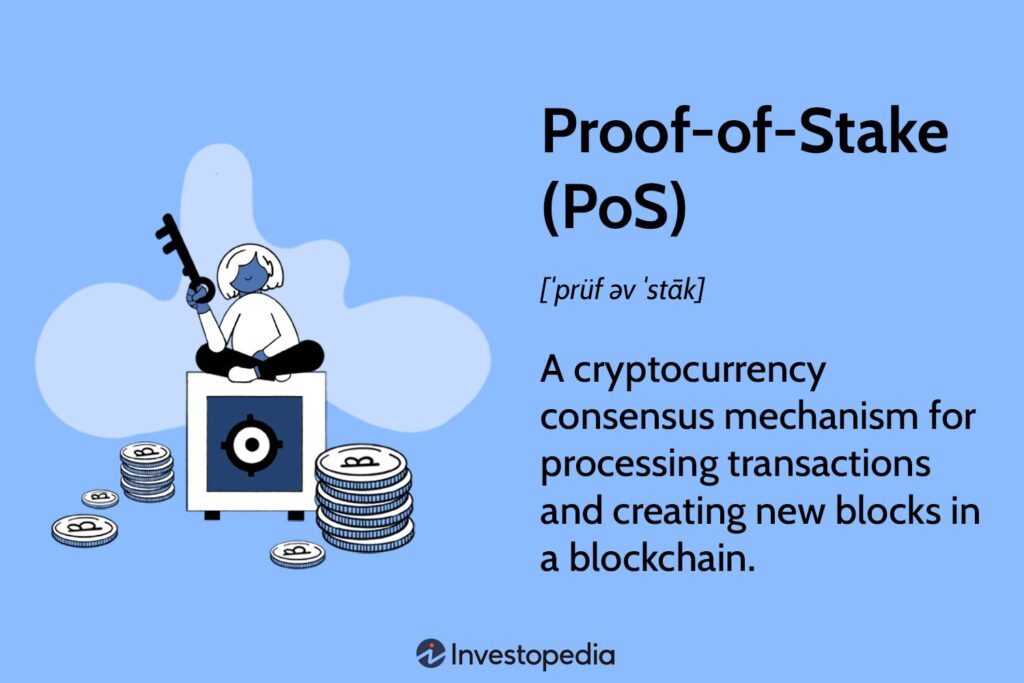Blockchain technology has revolutionised the way we execute transactions, offering decentralisation, security, and transparency. At the heart of many blockchain networks lie consensus algorithms, mechanisms that ensure agreement among participants on the validity of transactions.
Three prominent consensus algorithms—Proof of Work (PoW), Proof of Stake (PoS), and Delegated Proof of Stake (DPoS)—have emerged as key players in the blockchain space, each with its unique characteristics and trade-offs.
In this article, we delve into the workings of these algorithms, comparing their features, advantages, and drawbacks.
Proof of Work (PoW)
Proof of Work is the oldest and most renowned consensus algorithm, famously associated with Bitcoin, the pioneering cryptocurrency. PoW relies on miners to validate and add blocks to the blockchain. Miners compete to solve complex mathematical puzzles, requiring significant computational power. The first miner to solve the puzzle earns the right to add a block and receive the associated block reward.
Advantages of PoW
Below are some advantages of PoW networks.
- Security: PoW networks are highly secure due to the computational effort required to alter transaction history.
- Decentralisation: PoW allows anyone with computational resources to participate in block validation, promoting decentralisation.
- Proven Track Record: Bitcoin, the most prominent PoW-based blockchain, has demonstrated the resilience and effectiveness of the PoW consensus over more than a decade, proving its viability.
Drawbacks of PoW
While PoW has benefits, it also has drawbacks, as stated below.
- Energy Intensive: PoW mining consumes vast amounts of electricity, leading to concerns about environmental sustainability.
- Centralisation Tendencies: As mining becomes increasingly competitive, it tends to concentrate in the hands of a few powerful mining pools or entities, potentially undermining decentralisation.
- Scalability Challenges: The intensive computational requirements of PoW can limit the scalability of blockchain networks, leading to slower transaction processing times and higher fees during periods of high demand.

Proof of Stake (PoS)
Proof of Stake is an alternative consensus algorithm that addresses some of the drawbacks of PoW. In PoS, validators are chosen to create new blocks based on the amount of cryptocurrency they hold and are willing to “stake” as collateral. Validators are rewarded with transaction fees and newly minted coins.
Advantages of PoS
- Energy Efficiency: PoS requires significantly less energy compared to PoW, as it does not rely on computational puzzles especially when comparing Ethereum vs Bitcoin in terms of energy efficiency.
- Scalability: PoS networks can potentially scale more efficiently than PoW networks, leading to faster transaction processing times and lower fees.
Drawbacks of PoS
- Wealth Concentration: PoS systems may lead to wealth concentration, as participants with more coins have a greater influence over block validation, leading to risks of centralisation on these networks.
- Nothing-at-Stake Problem: Critics argue that PoS introduces the “nothing at stake” problem, where validators have little to lose by supporting multiple, potentially conflicting, blockchain histories.
- Security Concerns: Some experts question the security of PoS networks, particularly in scenarios where a significant portion of the cryptocurrency supply is controlled by a small number of entities.

Delegated Proof of Stake (DPoS)
Delegated Proof of Stake is a variation of the PoS consensus algorithm that introduces a representative democracy-like model in blockchain technology. In DPoS, token holders vote for a limited number of delegates or validators who are responsible for block production and network governance.
Advantages of DPoS
Here are some advantages of DPoS networks:
- Efficiency: DPoS can achieve high transaction throughput and low latency due to its streamlined block production process.
- Decentralisation: While DPoS involves a smaller set of validators compared to PoW and PoS, it still maintains a degree of decentralisation through token holder participation in delegate selection.
- Governance Mechanism: DPoS introduces a governance layer where token holders can influence network decisions through voting for delegates.
Drawbacks of DPoS
Below are some drawbacks of the DPoS protocols.
- Centralisation Risks: DPoS has been criticised for its potential centralisation, as a small number of delegates may control the network, leading to governance issues.
- Vulnerability to Vote Buying: In DPoS systems, stakeholders may engage in vote buying or collusion, undermining the integrity of the governance process.
- Dependence on Reputation: DPoS relies on the reputation of elected delegates, which may introduce trust issues if delegates act against the interests of the network.

Conclusion
Proof of Work, Proof of Stake, and Delegated Proof of Stake represent three distinct approaches to achieving consensus in blockchain networks, each with its strengths and weaknesses.
While PoW offers proven security but at the cost of energy consumption and scalability limitations, PoS and DPoS aim to address these issues through energy efficiency and streamlined block production processes. However, they also introduce new challenges, such as wealth concentration and governance issues.
As blockchain technology continues to evolve, it is essential to carefully consider the trade-offs of each consensus algorithm in designing and managing decentralised networks. Ultimately, the choice of consensus mechanism should align with the goals and values of the blockchain community it serves.
For even more helpful articles like this, visit our features section.